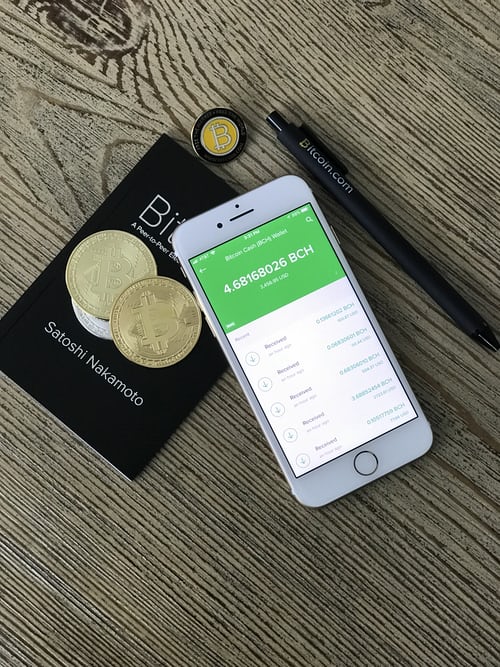Virtual currency is making waves in the World and will be next revolution like Internet, Smartphone and other inventions and research which will have long lasting benefits to entire population especially in commercial application. Some of the highlights of the above concept will be discussed in this article.
Currency – The major difference between Money vs Currency is that money is entirely numerical i.e. it’s only intangible which one cannot touch or smell whereas in case of currency one can be touch and smell and it is tangible.
Virtual Currency
Virtual currency is a type of unregulated digital currency that is only available in electronic form. It is stored and transacted only through designated software, mobile or computer applications, or through dedicated digital wallets, and the transactions occur over the internet through secure, dedicated networks.
Understanding Virtual Currency
Virtual currency can be defined as an electronic representation of monetary value that may be issued, managed, and controlled by private issuers, developers, or the founding organization. Such virtual currencies are often represented in terms of tokens and may remain unregulated without a legal tender.
Central Bank Digital Currency (CBDC)
A central bank digital currency (CBDC) uses an electronic record or digital token to represent the virtual form of a fiat currency of a particular nation (or region). A CBDC is centralized; it is issued and regulated by the competent monetary authority of the country.
There is no clarity about any suitable reserve maintenance to back up the valuations of cryptocurrencies. Additionally, the continued launch of new cryptocurrencies has also raised concerns about the possibility of scams, thefts, and hacks.
Unable to control the growth and influence of such cryptocurrencies, many leading central banks across the globe are working on or contemplating launching their own versions of cryptocurrencies. These regulated cryptocurrencies are called central bank digital currencies and will be operated by the respective monetary authorities or central banks of a particular country.
Also called digital fiat currencies or digital base money, CBDC will act as a digital representation of a country’s fiat currency, and will be backed by a suitable amount of monetary reserves like gold or foreign currency reserves.
Each CBDC unit will act as a secure digital instrument equivalent to a paper bill and can be used as a mode of payment, a store of value, and an official unit of account. Like a paper-based currency note that carries a unique serial number, each CBDC unit will also be distinguishable to prevent imitation. Since it will be a part of the money supply controlled by the central bank, it will work alongside other forms of regulated money, like coins, bills, notes, and bonds.
CBDC aims to bring in the best of both worlds—the convenience and security of digital form like cryptocurrencies, and the regulated, reserved-backed money circulation of the traditional banking system. The particular central bank or other competent monetary authority of the country will be solely liable for its operations.
Examples of CBDCs
To date, no country has officially launched a central bank-backed digital currency. Many central banks, however, have launched pilot programs and research projects aimed at determining a CBDC’s viability and usability.
On May 20, 2021, Federal Reserve Board Chair Jerome H. Powell announced that the U.S. Fed plans to publish a paper in the summer of 2021 that will explore the implications of issuing a U.S. central bank digital currency, to complement the research already underway.
The Bank of England was the pioneer to initiate the CBDC proposal. Following that, central banks of other nations, like China’s Peoples Bank of China(PBoC), Bank of Canada (BoC), and central banks of Uruguay, Thailand, Venezuela, Sweden, and Singapore, among others, are looking into the possibility of introducing a central bank-issued digital currency.Russia has been moving forward with its creation of the “crypto-ruble,” in 2017. Venezuela has been purported to be working on a CBDC called the petro since 2017, which would be backed by physical stocks of crude oil. The Venezuelan government also announced petro gold in 2018, allegedly pegged to the value of oil, gold, and other precious metal.
Difference between Digital, Virtual, and Crypto Currencies
Digital currency is the overall superset that includes virtual currency, which in turn includes cryptocurrencies. Compared to virtual currency, a digital currency covers a larger group that represents monetary assets in digital form.
Digital currency can be regulated or unregulated. In the former case, it can be denominated to a sovereign currency—that is, a country’s central bank can issue a digital form of its fiat currency notes. On the other hand, a virtual currency often remains unregulated and hence constitutes a type of digital currency.
Cryptocurrencies like bitcoin and ethereum are considered to be a part of the virtual currency group. A cryptocurrency uses cryptography technology that keeps the transactions secure and authentic, and also helps to manage and control the creation of new currency units. Such cryptocurrencies exist and are transacted over dedicated block chain-based networks that are open to the common public.
Block chain
Blockchain seems complicated, and it definitely can be, but its core concept is really quite simple. A blockchain is a type of database. A database is a collection of information that is stored electronically on a computer system. Information, or data, in databases is typically structured in table format to allow for easier searching and filtering for specific information.A database structures its data into tables whereas a blockchain, like its name implies, structures its data into chunks (blocks) that are chained together. This makes it so that all blockchains are databases but not all databases are blockchains. This system also inherently makes an irreversible timeline of data when implemented in a decentralized nature. When a block is filled it is set in stone and becomes a part of this timeline. Each block in the chain is given an exact timestamp when it is added to the chain.
Phased Implementation of CBDC being considered : Recently Reserve Bank of India is working towards a “ phased implementation strategy” of a Central Bank Digital Currency (CBDC) , RBI deputy governor T Rabi Shankar said in recent press statement. He also informed RBI is framing several considerations on the scope and legal framework of the proposed CBDC that will likely coexist with cash and digital forms of payments. In nutshell we understand following :
CBDC A legal tender issued by a central bank in a digital form. 86% of central bank in the world are researching CBDC. 14% are in pilot testing phase. A pilot to test India’s own digital currency is a possibility in near future.
What is advantage of using CBDC
- Reduced dependence on cash
- Saving on cost of printing currency
- A more robust settlement mechanism.
- Elimination of ‘time zone difference’ for monetary transaction all over the world.
RBI STAND
An RBI booklet on payment systems issued on 25th Jan 2021 also shows that the central bank is exploring to issue of a digital version of the rupee. In legislative order of business for budget session of 17th Lok Sabha the Government has listed a bill providing for the banning of all private cryptocurrencies in India such as Bitcoin, Ether, Ripple and others . The bill also provides for creation of a legislative framework on an official digital currency and to eliminate use of crypto assets in illegitimate activities.
“Private digital currencies have gained popularity in recent years” the central bank booklet said. “ In India, the regulators and governments have been sceptical about these currencies and are apprehensive about the risk associated. Nevertheless RBI is exploring the possibility as to whether there is a need for a digital version of fiat currency and, and in case there is, how to operationalize it,” it noted. A previous RBI ban on the use of bank channels for payments associated with cryptocurrencies issued in 2018 was overturned by Supreme Court in March 2020 creating a vacuum in the regulation of cryptocurrency in India.
Cryptocurrency bill will be introduced soon
Cryptocurrency bill, the much-awaited legislation to regulate virtual currency in India, is expected to be taken up by the Union Cabinet soon. A high-level committee headed by the secretary (economic affairs) had already submitted the report on cryptocurrency. The government had earlier formed the panel to study the issues related to digital currencies and propose specific actions regarding the crypto coins. “Cabinet note is ready on cryptocurrency (bill). I am awaiting Cabinet to clear that,” finance minister Nirmala Sitharaman said on Monday.






good info
Informative 👍
Very good article… It deals in depth about the various aspects related to Digital, Virtual and Crypto currencies. The only concern remaining in the books today is the security aspects related to the circulation of these currencies. CBDC authorities (ie the Regulator RBI in our country) should ensure that the issue of security aspects are in place and hence should formulate a policy to go through the entire process in a phased manner. No doubt it is a good idea, to shift to Virtual World which can effectively be brought to use in large and bulk transactions. Time has changed. People should ofcourse adopt to new strategies. Kudos to the author of the article… JaiHind.
Great. Never knew this earlier. Keep writing and do inform also. I am blessed to have a friend like you.
I have shared your article with a WhatsApp group of my school friends.
Regards.
As the days of new invention the cash dealings are changed from handling currency now we reached the stage of computerised exchange . More efficiency required for a person who has more cash transaction
Where do you get the time to gather information about the subject and compose the article, good one.
Good topic you have chosen.
Good information and very well summarized …